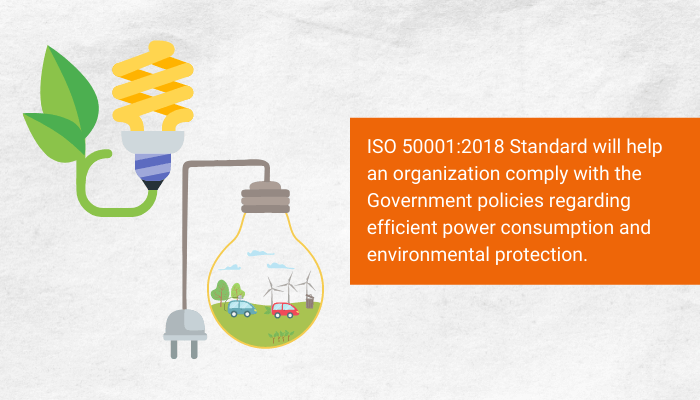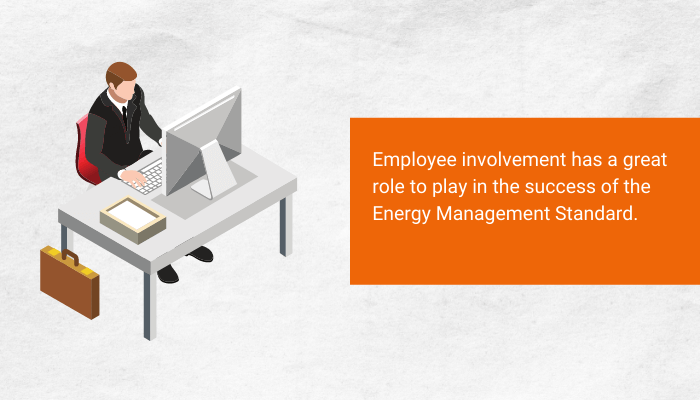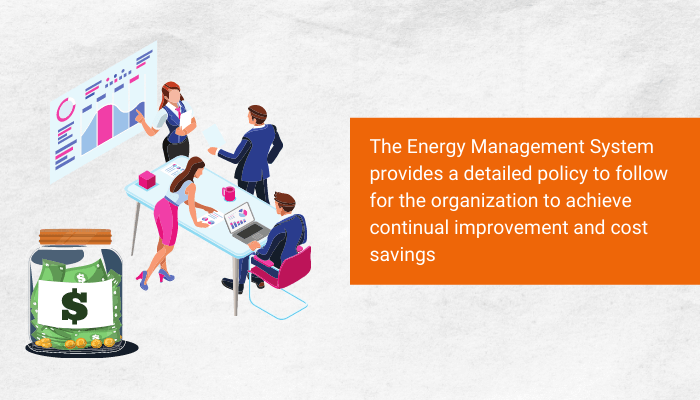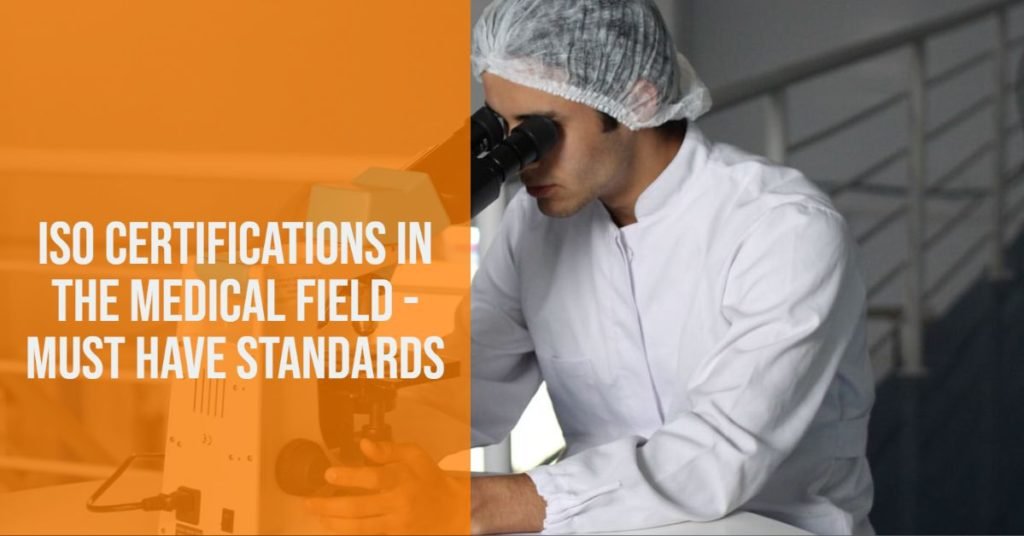Energy Conservation System is an essential component to achieve significant energy efficiency. The concept of energy efficiency must be integrated into the daily management practices of the organization.
ISO 50001:2018 Standard enables the seamless integration of the Energy Conservation System into the existing business systems. It helps in achieving Significant savings in power cost, continuously improving energy performance, and more.
ISO Energy Conservation Standard – Key Highlights
Governments are now implementing an approach for saving energy consumption and rate industries and sectors based on their power consumption.
Hence ISO 50001:2018 Standard will help an organization comply with the Government policies regarding efficient power consumption and environmental protection.

ISO Energy Standard lists out the best practices to cost-effectively reduce energy use. The Energy Conservation System Standard is a benchmark for climate and clean energy action globally. Hence, ISO 50001:2018 is a must-have standard for large and small-scale industry sectors.
There are many positive aspects of having an Energy Management System in place. They are the following:
- Reduced Energy Consumption Cost
- Increase Labor Productivity and Energy Security
- Reduced Green House Gas Emission
What are the Components of an Energy Conservation System?
Energy Conservation System follows a ‘Plan-Do-Check-Act’ framework of continuous improvement. It includes a robust framework and policies to ensure systematic tracking, analysis, and planning the energy use.
Organizations adopting the ISO Energy Standard are aiming for an initial energy consumption improvement of 10% or more and achieve significant net cost savings.
With minimal changes to the current system and huge initial investments in new energy-saving equipment, ISO Energy Standard policies help to optimize the current system to achieve the desired energy efficiency.
ISO Energy Conservation Standard also has policies for supporting green initiatives to stabilize the climate and reduce global warming. The key focus area while implementing the ISO Energy Standard are:
- Reducing the Emissions of Greenhouse Gases, and,
- Protecting the Environmental Balance
ISO Energy Standard – Things to Know about Energy Conservation System
Organizations irrespective of any size must effectively manage the business operations associated with energy management. Following are a few objectives small and large-scale companies must fulfill.
- Implement cost-effective energy-saving practices.
- Meet the legal and contractual energy compliance requirements
- Enhance Energy Security and demonstrate a commitment to improving energy efficiency
Things to Note – ISO Energy Certification Standard Implementation
1. General Requirements
ISO Energy Standard enables an organization to monitor and improve their energy usage. The newly implemented system will guide the employees to operate the business in a way to keep the energy consumption at an all-time low level always.

Employee involvement has a great role to play in the success of the ISO Energy Standard Implementation. The employees are all provided detailed awareness training about the policies and best practices to keep the energy consumption low while operating in the assembly/production line.
2. Management Responsibility
The role of Top Management in executing the Energy Conservation System Standard is very important. They must be actively involved in ISO Certification Process. IT helps in successfully implementing the Energy Conservation System.
They must provide the right resources and manpower to conduct the Certification in real-time. The team must be supportive to implement the Energy Conservation System in the organization. They must be actively involved in streamlining the business operations with more energy-efficient practices.
3. Management Representative
The role of the Management Representative is to create awareness about the Energy Conservation System.
The Management Representative will also coordinate the ISO implementation process, super vice the training and awareness sessions, prepare the policy frameworks, guidelines, and feedback, frequent system checks, and more.

They will ensure the Energy Conservation System is fully functional and the Quality Team and all employees in the organizations are well aware of the system and its usage to achieve the desired business objective.
4. Energy Policy
The Energy Conservation System provides a detailed policy to follow for the organization to achieve continual improvement and cost savings to the organizational energy consumption.
The policy also provides a framework to set energy objectives and target energy action plans to further streamline the performance.
5. Energy Planning
Energy Planning is an important area of focus before every ISO Energy Certification implementation, the organization must identify and must have access to the applicable legal and other requirements to its energy uses, consumption, and efficiency to which it complies.
The legal policies include international, national, regional, and local government statuary requirements that apply to the energy usage of the organization.
6. Energy Review, Performance Indicators
Reviewing the Energy Conservation System is essential and must be done the right way to measure the success of the organization. The ISO Standard insists on developing a record and maintaining an energy review and documenting the methodology to develop the review.
It helps in measuring energy consumption and organizational performance. Also, the system ensures whether all the performance indicators are used to measure the energy performance overall.
Hence, in a nutshell, to improve the energy consumption levels and keep the overall energy cost low, ISO Energy Standard has the right set of guidelines and policies to follow. Organizations getting equipped with the Energy Conservation System will see the results in real-time.
To know more about ISO 50001:2018 Standard and the implementation process in UAE, talk to our expert ISO Consultants right away!
Contact Us: Aurion ISO Consultants



